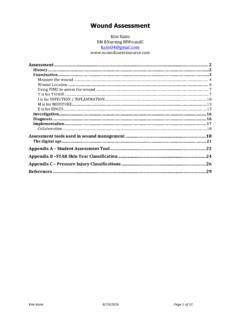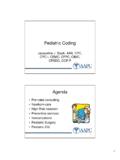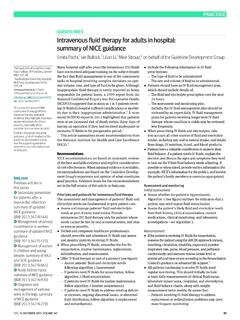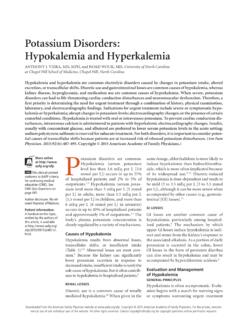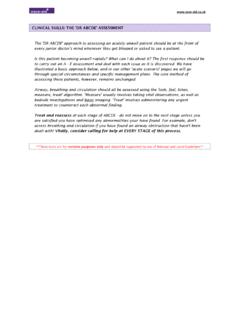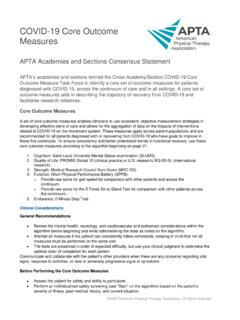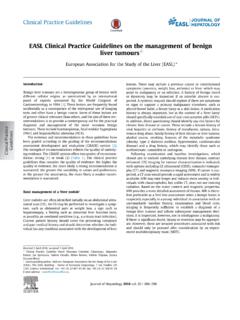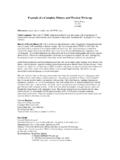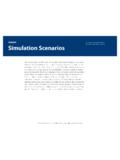Transcription of SAMPLE NOTES/COMMON ABBREVIATIONS
1 Rev 5/1/2017 SAMPLE NOTES/COMMON ABBREVIATIONS Tools for the OB/GYN clerkship, contained in this document: obstetrics admission delivery operative postpartum section gynecologic history & physical (H & P) labor rounding lessonrev 5/1/2017 Admission to Labor and Delivery NoteDate & time Identification (includes age, gravidity, parity, estimated gestational age, and reason for admission): 26yoG3P1A1 @ 38W5D EGA presents with painful contractions since noon. Pt reports good fetal movement, and denies rupture of membranes or vaginal bleeding. LMP: Estimated date of confinement (EDC): Chief complaint: history of present illness (includes Prenatal Care (PNC): Labs, including HIV, GBS, GDM/HTN, # PNC visits, wt gain, s=d, etc.)
2 Past history : Obstetrics: List each pregnancy (NSVD, st 4000 grams, complicated by gestational diabetes and shoulder dystocia) Gynecology: PMH and PSH: Medications: PNV, FeSO4 Allergies: No Known Drug Allergies (NKDA) Social history : Ask about Tobacco/EtOH/Drugs Physical exam (focused): General and Vital signs Lungs CV (Many pregnant women have a grade 1-2/6 systolic ejection murmur Abd Gravid, fundus mom-tender (NT), fundal height (FH) 38 cm, Leopold maneuvers: Fetus is vertex (VTX), estimated fetal weight (EFW) 3300 gm Sterile speculum examination if indicated to rule out spontaneous rupture of membranes (SROM) Sterile vaginal exam (SVE) = 4 cm/80%/VTX/-1 as per Dr.)
3 Smith/time Ext No Cyanosis, clubbing or edema (C/C/E), NT Pertinent Labs: Ultrasound: Date: 10 wks by crown-rump length (CRL) Date: 20 wks, no anomalies Assessment: 26yo G3P1 at term, in labor fetal heart rate tracing (FHRT) reassuring Intrauterine pregnancy (IUP) at 30 weeks gestation FHRT Baseline 140 s, accelerations present, no decelerations Contractions q 4-5 min Any pertinent past medical or surgical history Plan: Admit to L & D NPO except ice chips IV D5LR at 125 cc/hr Continuous electronic fetal monitoring CBC, T & S, RPR Anticipate NSVD Delivery NotesDate and time: rev 5/1/2017 Summary: NSVD of a live male, 3000 gm and Apgars 9/9.
4 Delivered LOA, no nuchal cord, light meconium. Nose and mouth bulb suctioned at perineum; body delivered without difficulty. Cord clamped and cut. Baby handed to nurse. Placenta delivered spontaneously, intact. Fundus firm, minimal bleeding. Placenta appears intact with 3 vessel cord. Perineum and vagina inspected small 2nd degree perineal laceration repaired under local anesthesia with 2-0 and 3-0 vicryl suture in the usual fashion. EBL 350cc. Hemostasis. Pt tolerated procedure well, recovering in LDR. Infant to WBN. Operation NoteDate and time: Pre-op Diagnosis: Symptomatic uterine fibroids or Pregnancy at term, failure to progress Postop Diagnosis: Same Procedure: TAH/BSO or Cesarean Section Surgeon (Attending): Residents: Anesthesia: GET (general endotracheal, others include spinal, LMA, IV sedation) Complications: None EBL: 300cc Urine Output: 200 cc, clear at the end of procedure Fluids: 2,500 cc crystalloid (include blood or blood products here) Findings: Exam under anesthesia (EUA) and operative Specimen: Cervix/uterus Drains: If placed Disposition.
5 Recovery room, Surgical ICU, etc 4a. SAMPLE Postpartum Notes (Soap format) Date and time: Subjective: Ask every patient about: Breastfeeding are they breastfeeding/planning to? How is it going? Baby able to latch on? Contraceptive plan with relevant sexual history Lochia (vaginal bleeding) Clots? How many pads? Pain cramps/perineal pain/leg pain? Relief with medication? Do they need more pain meds?Objective Vital signs and note tachycardia, elevated or low BP, maximum and current temperature Focused physical exam includingoHeartoLungsoBreasts: engorged?
6 Nipple skin intact?oAbd: Soft? Location of the uterine fundus below umbilicus? Firm? Tender?oPerineum: Assess lochia (blood on pad, how old is pad?)oVisually inspect perineum Hematoma? Edema? Sutures intact?oExtremities: Edema? Cords? Tender? Postpartum labs: Hemoglobin or hematocritAssessment/Plan: PPD#_S/P NSVD or Vacuum or Forceps (with 4th-degree laceration, with pre-eclampsia s/p Magnesium Sulfate) General assessment Afebrile, doing well, tolerating dietrev 5/1/2017 Contraception plans (must discuss before patient goes home) Vaccines does pt need rubella vaccine prior to discharge?
7 Breastfeeding? Problems? Encourage. Rhogam, if Rh-negative Discharge and follow-up plan patients usually go home if uncomplicated 24-48 hours postpartum Follow-up appointment scheduled in 2-6 weeks postpartum4b. SAMPLE Postoperative Cesarean Section Orders/Note Admit to Recovery Room, then postpartum floor Diagnosis: Status post (S/p) C/S for failure to progress (FTP) Condition: Stable Vitals: Routine, q shift Allergies: None Activity: Ambulate with assistance this PM, then up and lib Nursing: Strict input and output (I&O), Foley to catheter drainage, call MD for Temp > , pulse > 110, BP < 90/60 or > 140/90, encourage breastfeeding, pad count, dressing checks, and Ted s leg stockings until ambulating Diet: Regular as tolerated.
8 Some hospitals only allow ice chips or clear liquids IV: Lactated ringers (LR) or D6LR at 125 cc/hr, with 20 units of Pitocin x 1-2 Liters Labs: CBC in AM Medications: Morphine sulfate PCA (patient controlled analgesia) per protocol (1 mg per dose with 10 minutelockout, not to exceed 20 mg/4 hours) Percocet 102 tabs PO q 4-6 hours prn pain, when tolerating PO well Vistaril 25 mg IM or PO q 6 hours prn nausea Ibuprofen 800 mg PO q 8 hours prn pain, when tolerating PO well Prophylactic antibiotics if indicated Thromboprohylaxis for high-risk patients Rhogam, if Rh-negativeSample C/S Note Date and Time: Day #1 (Post-op day POD#1) Subjective: Ask patient about: Pain relieved with medication?
9 Nausea/vomiting Passing flatus (rare this early post-op)Objectives Vital signs and note tachycardia, elevated or low BP, maximum and current temperature Input and output Focused physical exam includingoHeartoLungsoBreast: engorged? Nipples Is skin intact?rev 5/1/2017 oIncision: Clean and dry, intact?oAbd: Soft? Location of the uterine fundus below umbilicus? Firm? Tender?oPerineum: Assess lochia (blood on pad, how old is pad?)Visually inspect perineum Hematoma? Edema? Sutures intact?oExtremities: Edema? Cords? Tender? Postpartum labs: Hemoglobin or hematocritAssessment/Plan: POD#1 status post (S/P) C/S or repeat C/S (indication for the C/S) Afebrile, tolerating pain with medication, oral intake, adequate urine output (>30cc/hr) Routine post0op careoDischarge FoleyoDischarge PCA or IV pain medications and PO pain Meds when tolerating POoOut of bed (OOB)oAdvance diet as toleratedoDischarge IV when tolerating PO Check hematocrit or CBC5.
10 SAMPLE Gynecologic history and PhysicalIntroduction: Name, age, gravidity, parity and presenting problem HPI: Past Medical history /Past Surgical history : Past Gynecologic history : Menses menarche, cycle duration, length, heaviness, intermenstrual bleeding, dysmenorrhea,and menopause (if relevant). Abnormal Pap smears, including time of last Pap Sexually transmitted infections Sexual history Postmenopausal women. Ask about hypoestrogenic symptoms, such as hot flashes or nightsweats, vaginal dryness, and about current and past use of hormone/estrogen replacementtherapy.
